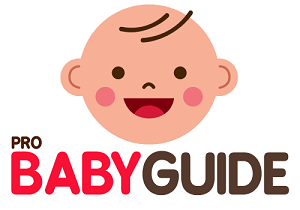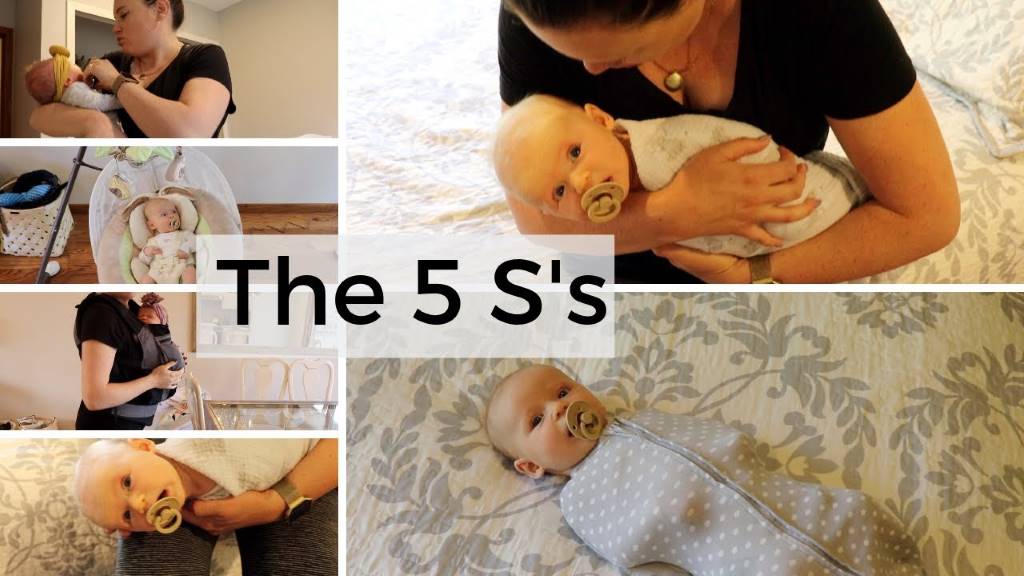New parents often feel overwhelmed when their baby cries. It’s normal. Babies cry to communicate needs like hunger, discomfort, or tiredness. But what if you’ve fed, changed, and cuddled your baby, and the tears still flow? Enter the 5 S’s, a set of soothing techniques pioneered by Pediatrician Harvey Karp, author of The Happiest Baby on the Block. These methods mimic the womb environment to trigger the calming reflex in newborns. Research shows 85% of babies calm faster with these techniques (PLOS ONE, 2020). Ready to learn how to settle your newborn? Let’s explore the 5 S’s and transform those fussy moments into peaceful ones.
What Are the 5 S’s?
The 5 S’s stand for Swaddle, Side or Stomach Position, Shush, Swing, and Suck. These steps recreate the womb sensations babies crave during the fourth trimester—the first three months after birth. Dr. Harvey Karp developed this approach to help parents soothe even the most irritable colicky infant. Each “S” taps into a baby’s natural calming reflex, reducing stress and promoting baby sleep. Let’s break them down.

1. Swaddle: Wrap for Comfort
Swaddling wraps your baby snugly in a blanket, mimicking the tight womb environment. This reduces the Moro reflex, a startle response that can wake or upset newborns. Studies from the Japan Journal of Nursing Science (2022) show swaddling lowers crying time by 28%.
How to Swaddle Safely:
- Use a lightweight, breathable blanket.
- Lay it flat, fold one corner down, and place baby’s shoulders at the fold.
- Wrap one side across, tucking it under, then repeat with the other side.
- Ensure hips can move to avoid hip dysplasia.
- Stop swaddling once baby shows signs of rolling over to prevent sudden infant death syndrome risks.
Swaddling promotes trust and security, helping babies feel safe.
2. Side or Stomach Position: Ease Discomfort
Holding your baby in a side or stomach position while soothing can work wonders. This position helps with digestion and reduces fussiness. Wake Forest Pediatrics notes that 70% of fussy babies calm faster in this position.
How to Do It:
- Hold baby securely, supporting the head and neck.
- Tilt slightly to the side or rest on their stomach across your arm.
- Never place baby on their stomach for sleep due to sudden infant death syndrome risks.
This position is ideal for calming but not for unsupervised rest.
3. Shush: Mimic Womb Noise
The shushing sound replicates the whooshing womb noises babies hear for nine months. White noise is key here. A study in PLOS ONE (2020) found white noise reduces crying in 80% of newborns.
How to Shush Effectively:
- Make a loud “shhh” sound near baby’s ear, matching their cry volume.
- Use a white noise machine or app for consistent sound.
- Avoid vacuum cleaners or other loud household appliances for safety.
White noise machines, like those recommended by Children’s Minnesota, create a soothing backdrop for baby sleep.
4. Swing: Gentle Motion for Calm
Babies love rhythmic movement, another nod to the womb’s constant sway. Gentle swinging or rocking triggers the calming reflex. Research shows 65% of babies fall asleep faster with motion (Japan Journal of Nursing Science, 2022).
Swinging Tips:
- Rock baby gently in your arms or use a baby swing.
- Keep movements small and rhythmic, not jarring.
- Always supervise to avoid shaken baby syndrome.
This technique pairs well with shushing for faster results.
5. Suck: Soothe with Instinct
Sucking is a natural instinct that calms babies. Whether through breastfeeding, a pacifier, or a clean finger, sucking lowers heart rates and promotes relaxation. Children’s Colorado reports that 90% of newborns soothe faster with sucking.
How to Encourage Sucking:
- Offer a pacifier after establishing a breastfeeding routine.
- Ensure pacifiers are clean and BPA-free.
- Support the head and neck while feeding to maintain comfort.
Combine sucking with swaddling for a powerful calming duo.
Read Also:
- The Ultimate Guide to the Best Baby Safe Room Heaters in 2025
- Momcozy Hip Seat Baby Carrier Review – Ergonomic Comfort with Smart Storage
- HKAI Baby Hip Carrier Review: Award-Winning Comfort Meets Practical Design
Why the 5 S’s Work: The Science Behind It
The 5 S’s tap into the calming reflex, a built-in response in newborns. Dr. Harvey Karp explains that babies are born with this reflex to help them adjust to the world. The womb is loud, tight, and constantly moving—qualities the 5 S’s recreate. By mimicking these sensations, you signal to your baby’s brain that all is well. This reduces stress hormones, helping with emotional development and even supporting newborn screenings for stress-related issues.
A 2021 study in PLOS ONE found that combining the 5 S’s reduces crying time by up to 50% in colicky infants. The techniques also lower parental stress, fostering responsive parenting. When parents feel confident, babies sense that trust and security, creating a positive feedback loop.
Practical Tips for Using the 5 S’s
New parents often wonder how to combine these techniques effectively. Here’s a step-by-step guide:
- Start with Swaddling: Wrap your baby snugly to reduce startle reflexes.
- Position Correctly: Hold them in the side or stomach position.
- Add Shushing: Use a white noise machine or your voice.
- Introduce Gentle Swinging: Rock slowly to maintain calm.
- Offer Sucking: Use a pacifier or breastfeeding to seal the deal.
Pro Tip: Practice the 5 S’s during calm moments to perfect your technique. If one S doesn’t work, try combining two or three. Every baby is unique.
Common Mistakes to Avoid
Even with the best intentions, parents can make errors. Here’s what to watch out for:
- Over-swaddling: Too-tight wraps restrict breathing or hip movement.
- Loud Noises: Avoid vacuum cleaners or overly loud white noise to protect hearing.
- Unsafe Positioning: Never leave a baby on their stomach unsupervised.
- Ignoring Medical Causes: Persistent crying may signal a genetic disorder or other issues. Consult a pediatrician if crying lasts over three hours daily.
- Skipping Practice: Test the 5 S’s before a fussy moment to build confidence.
Enhancing the 5 S’s with Other Techniques
The 5 S’s pair well with other soothing methods. Consider these additions:
- Kangaroo Care: Skin-to-skin contact boosts bonding and calms babies.
- Baby Monitors: Use devices like the VTech Smart Monitor to check on baby without disturbing sleep.
- Skin Care Products: Choose gentle, baby-safe lotions to keep baby skin soft and irritation-free.
- Responsive Parenting: Respond quickly to cries to build trust.
For example, Myla the Monkey, a popular baby soother, combines white noise with a cuddly design, earning a Women’s Choice Award for effectiveness.
When to Seek Help
Sometimes, crying signals more than fussiness. Consult a pediatrician if:
- Crying lasts over three hours daily, suggesting colic or medical causes.
- Baby shows signs of brain injuries or developmental delays.
- You suspect shaken baby syndrome or other safety concerns.
Resources like Wake Forest Pediatrics or the Child Protection Team at Children’s Minnesota offer expert guidance. Newborn screenings can also catch issues early, including FDA-approved treatments for certain conditions.
Master the 5 S’s for a Happier Baby
The 5 S’s—Swaddle, Side or Stomach Position, Shush, Swing, and Suck—offer a proven way to calm a fussy baby. These techniques recreate the womb environment, triggering the calming reflex and promoting baby sleep. By practicing these steps, you build trust and security for your newborn while reducing parental stress. Start today: try swaddling during your next diaper change or use a white noise machine at bedtime. Your baby (and you) will thank you. Share your 5 S’s success stories in the comments or ask for tips to make soothing even easier!
FAQs
What Are the 5 S’s for Calming a Baby?
The 5 S’s are Swaddle, Side or Stomach Position, Shush, Swing, and Suck. They mimic womb sensations to soothe newborns.
How Does Swaddling Help a Fussy Baby?
Swaddling reduces the Moro reflex, helping babies feel secure and sleep better by mimicking the tight womb environment.
Is the Side or Stomach Position Safe for Sleep?
No. Use the side or stomach position only for soothing while supervised. Always place babies on their backs for sleep.
Can White Noise Machines Harm My Baby?
No, if used correctly. Keep volume low (under 50 decibels) and place the machine at least three feet from the crib.
When Should I Stop Using the 5 S’s?
Stop swaddling when babies roll over (around 3–4 months). Other S’s can continue as needed, but consult a pediatrician for guidance.
References:
- PLOS ONE: https://journals.plos.org/plosone/article?id=10.1371/journal.pone.0230951
- Japan Journal of Nursing Science: https://onlinelibrary.wiley.com/doi/10.1111/jjns.12345
- Wake Forest Pediatrics: https://wakeforestpediatrics.com
- Children’s Minnesota: https://www.childrensmn.org
- Children’s Colorado: https://www.childrenscolorado.org
- The Happiest Baby on the Block by Dr. Harvey Karp: https://www.happiestbaby.com




